Symbiosis
This is the audio (below) for this halt. The text below is a transcription of the audio! The audios do not contain all the content written in the text to keep the audios engaging. If you want to have more details, check out the text. Enjoy!
“Lichens tell us things about life, they inform us”
Trevor Goward in the book Entlangled Life: How Fungi make our worlds, change our minds and shape our future by Merlin Sheldrake (2020, p.89)
Welcome to Westhall Gardens… Have you found the tree we will be looking at? Here are some pictures to find the right one.


What happens when human exceptionalism and the idea of individualism limited by a few (physical) boundaries is turned upside down by scientific discoveries on lichens?
Biology has always had immense power to ferment moral notions about life on Earth and has done so since the imperialism of the 18ᵉ century (Haraway, 2010).
Lichens are among those organisms that have shaken our beliefs not only about the idea of individuality, but also about sexual reproduction and heteronormative dogmas (Griffiths, 2015). The concept of symbiosis elicited by lichens has long been polemical and has stimulated many existential questions. Lichens thus continually challenge us to question and re-examine our relationship to the world around us.
I would like to introduce you to a few things that symbiosis tells us about and the role that lichens have played in the discovery of this concept.
Entangled, a lichen is not one, nor two, but multiple. Lichens are composed of two types of fungi, algae, and many bacteria. In addition to this assemblage of several species, lichens are sometimes attacked by lichenicolous fungi. The photos below show different lichens (yellow, Xanthoria parietina and blue Physcia tenella) being attacked by lichenicolous fungi, creating a pink and/or orange colour (due to the chemical reactions happening).
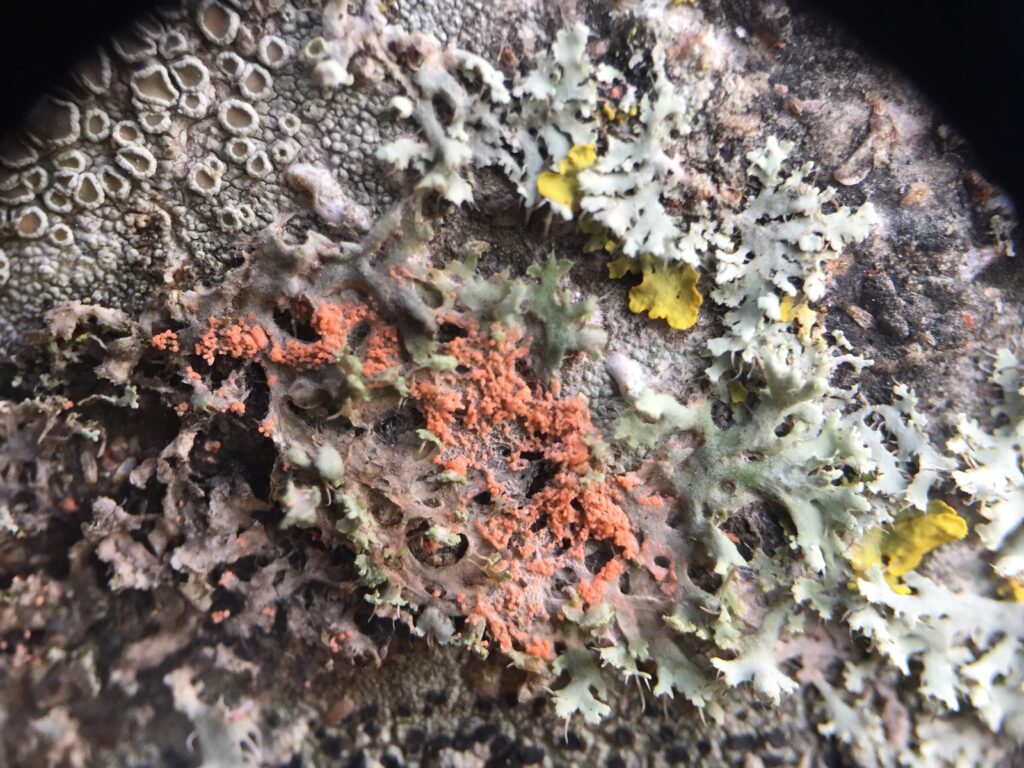
How did the idea of symbiosis come about?
It was in 1869 (three years after Ernst Haeckel coined the term ecology) that a Swiss botanist, Simon Schwendener, published an article introducing the double hypothesis of lichen.
In his article, Schwendener introduces the notion, radical at the time, that the lichen is not one organism but many. According to Schwendener, in the lichen, the alga is the slave of the fungus and is forced to serve it (this conception of natural phenomena reflected the political ideologies of the time). This hypothesis was refuted by lichenologists – people who study lichens – and was seen as shocking. One could not imagine two organisms living in such a close relationship and creating such a different form.
Moreover, based on the idea of evolution by natural selection developed by Charles Darwin, in 1859, new species were created by the divergence of species from each other. Evolution was seen as coming from competition (an interpretation of the people at the time, because Darwin’s writings do not ONLY speak of competition) instead of cooperation. Schwendener’s idea amounted to creating links between different evolutionary lineages (see photo of phylogenetic tree), which did not fit into the understanding of taxonomy at the time. The idea of the emergence of new species by the convergence of several species seemed impossible.
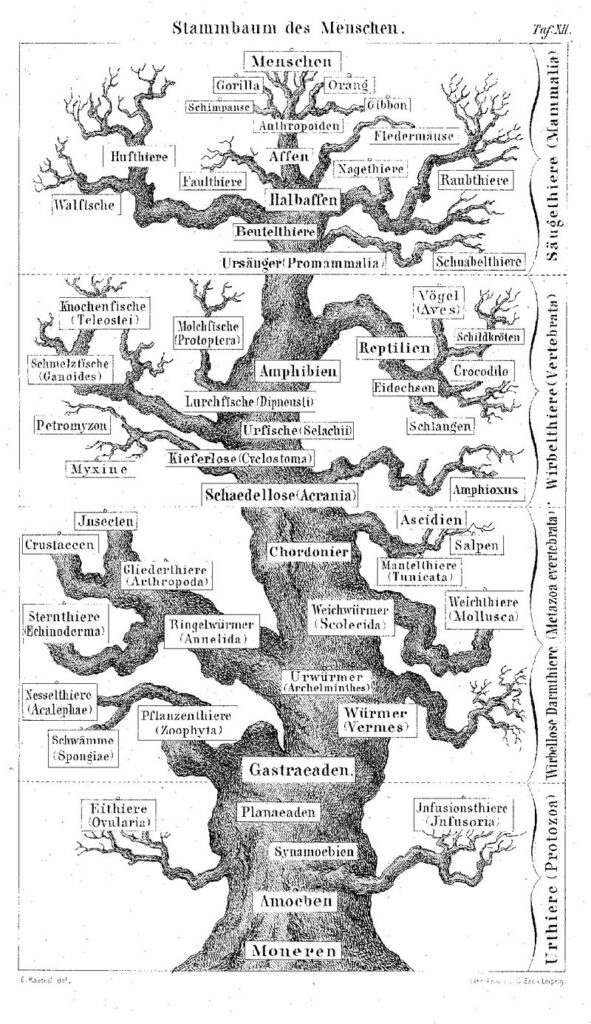
It was in 1877 that the German botanist Albert Frank introduced the idea of symbiosis as the close relationship between a species of algae and a type of fungus forming a lichen. Later, the term symbiosis would be used to describe a spectrum of interactions ranging from mutualism to parasitism (see content for Middle Meadows Walk here for more information on these terms).
The lichen became a symbol of symbiosis and a biological principle when scientists discovered that symbiosis is not the exception, but the rule. Examples include the complex relationships in corals, or bacteria and/or other organisms in the functioning processes of living organisms.
As a result, the process of evolution could no longer be seen as a race to compete – a theory that had stemmed from the misinterpretation of Darwinian thinking – but as the collaboration between organisms of several taxonomic groups. This forced many scientists to rethink their ideologies and the processes of evolution.
Cooperation as the source of diversity of living forms on earth
In Europe and the United States in the 1990s, evolutionary theories were influenced by the discoveries of Gregor Mendel, who opened the door to genetics. The main explanation for the variation and diversity of organisms on Earth was related to genetics (e.g. genetic mutations). Natural selection acts over time on the phenotypes – the observable traits of an organism, such as blue eyes in humans – that are most adapted in the environment. This is the main idea of what is called the modern synthesis of evolution.
Meanwhile in Russia, researchers were studying lichens and their symbioses. According to them, competition and genetics could not be the only source of diversity (in parts due to the different political ideologies at the time). Cooperation in nature was emphasised through symbiosis which could and does create new forms of life.
This idea of symbiosis as a source of variation came to Europe in the 1970s thanks to a woman (it is important to point it out because it is uncommon), the American biologist Lynn Margulis.
How did new life form on earth?
Living organisms are separated into three areas: bacteria, archaea (unicellular organisms that have a different membrane from bacteria) and eukaryotes. Animals, fungi and plants are eukaryotes. The cells of eukaryotes are larger than those of bacteria and archaea and have specialized structures (such as the nucleus or mitochondria). Plants have other specialized cells such as the chloroplast (where photosynthesis takes place).
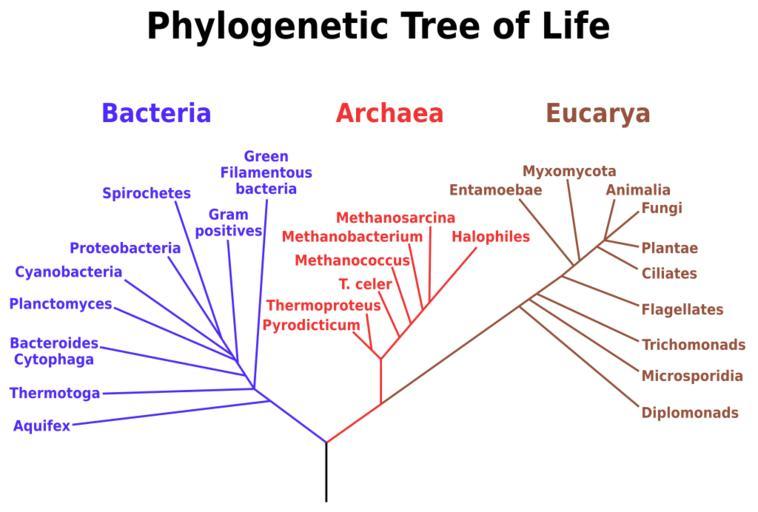
The Russians’ discovery that Lynn Margulis brought to Europe, is that the first eukaryotic cell forming the body of animals today would have been created through symbiosis. A eukaryote with a very simple structure would have engulfed a bacterium.
This engulfed bacterium would have remained in the host. And over time this symbiosis would have become permanent – surely, because it was beneficial to both cells – allowing the evolution (later on) of multicellular organisms. The bacterium would be the descendant form of the mitochondria (see cell diagram) which is the part of the eukaryotic cell allowing it to produce energy. The same process would have happened for the chloroplast in plants with a photosynthetic bacterium that came to be enclosed by a eukaryote.

This theory, which emphasises the importance of symbiosis in evolution, was initially denied for several years before being confirmed by scientific evidence in 1970. Lynn Margulis said that “the first eukaryotic cells were analogous to lichens”. This idea of endosymbiosis – symbiosis that lasts and creates new forms – has revolutionized our understanding of the natural world and has called into question the time required for the creation of new forms. Rapidly, through symbiosis, new adaptations and life forms can be created.
Today, several authors (Haraway, 2010; Gilbert, 2012) argue that every organism is a lichen, meaning symbiotic. For example, a squid (Euprymna scolopes) that lives in coastal and shallow waters in the Hawaiian archipelago, depends on its symbiosis with bacteria (Vibrio fischeri) that it acquires at birth to develop a luminescent organ in its head. This organ is essential to prevent the light of the stars and the moon from producing a shade. The luminescent organ of the squid thus enables it to hide from predators. This type of symbiotic relationship can actually be observed everywhere. Every tree depends on its fungal network to absorb nutrients from the soil through the roots. Cows could not digest the grass they eat without the anaerobic bacteria in their rumen.
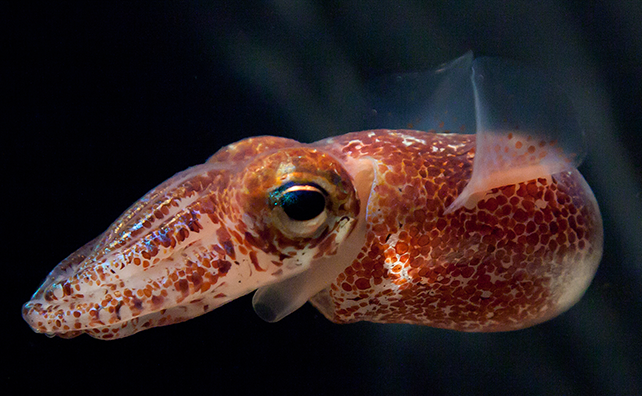
But then, who is the individual ? Where is the limit if every organism depends on others ?
I’ll leave you to ponder that question !
Lichens are changing our perceptions of the world. Recently, David Griffiths wrote an article called “Queer Theory for Lichens” where he questions our ideas of individuality through the findings on lichens.
He writes: “There are no universal, transcendent traits that define the individual (human or otherwise); instead, the self or individual is always contingent and context-dependent”. Indeed, the human gut microbiome (communities of microbes) – on which we depend to digest our food – is highly dependent on the environment in which we live. The individual is thus dynamic and changes according to the context and the environment.
Griffiths goes further and assumes that this symbiotic view questions the way we see the body not as “clean, healthy, and pure or infected, sick, and impure” but as an assemblage of many species. Bacteria inhabit us and enable us to function.
These new ideas may have an effect on how we view ourselves and how we view infected bodies, especially today. Furthermore, in these times of environmental and social change, this new symbiotic approach to the world helps us realize and “feel” the connections and subtleties that we, humans, have with other organisms, without whom we cannot live.
Finally, while from a certain perspective, the idea of “individual” is a concept and a category that helps humans, their behaviour and ideas, the notion of the organism boundaries is more complex. As one developmental biology researcher puts it, “we are all lichens”.
I hope this idea of symbiosis inspires you!
Activity
We will introduce to a species called Punctelia subrudecta, to the genus Lepraria and to the difference between lichens and free-living algae.
Punctelia subrudecta is blue grey in colour and has small dots on its thallus. These dots are called pseudocyphellae. They are holes in the upper cortex, which let us see the underlying medulla (the part with the mushroom hyphae, more info here, at the beginning of this walk). Coming out of the medulla are soredia – clusters of algae and fungal hyphae that disperse and allow new lichens to settle. The soredia are coming out of the sorelia and are granular, like a small powder. This kind of lichen is called Punctelia for its small dots on the thallus. The lower cortex of this lichen (the underneath) is white to brown.
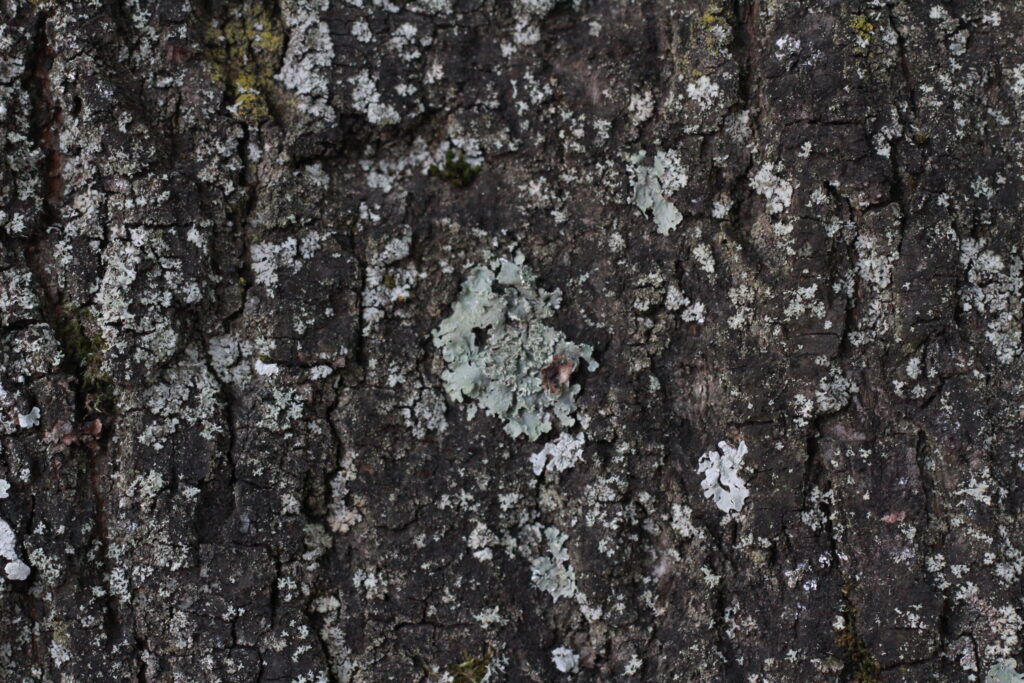
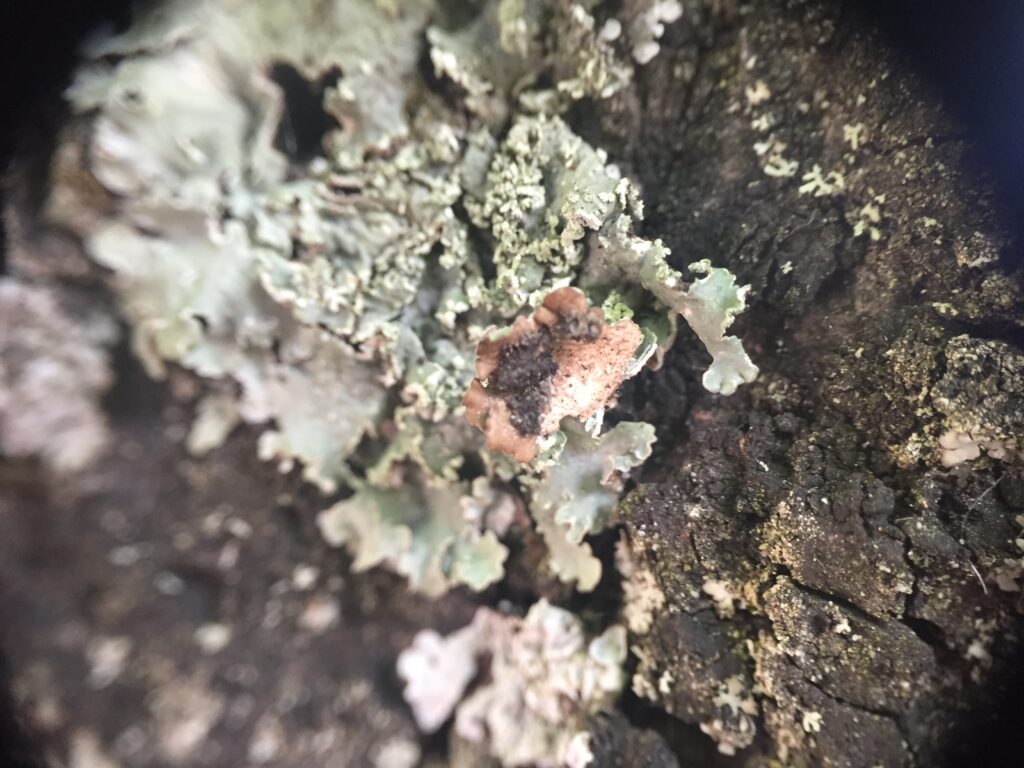
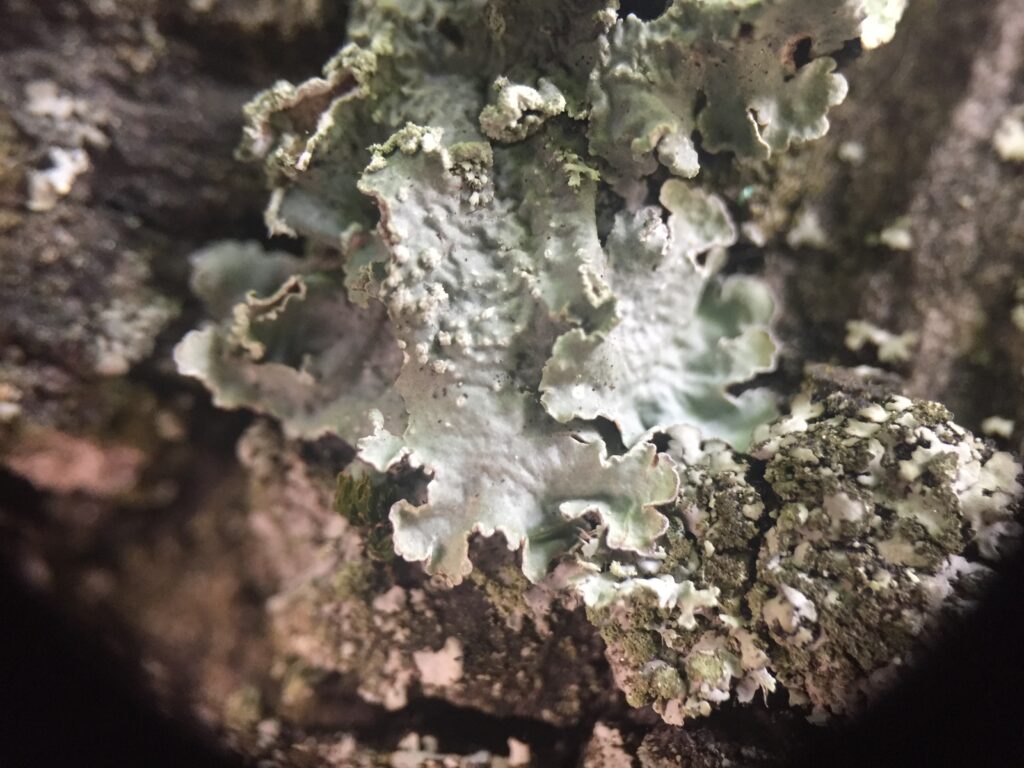
Credit: Close-up of Punctelia subrudecta, picture taken by the author, Lucie Pestiaux (2021) under a CC BY-SA 4.0 license.
Lepraria spp. This is a leprose lichen. The leprose thallus is made of a network of fungal hyphae with algal cells entangled among them. These lichens can be found in environment sheltered from the rain. This is the lichen on the right on the picture below. The organism on the left (apple green) are unicellular forms of algae. This is the alga without symbiosis with the fungal partner. When you pass your finger over it, you will be left with some particles.
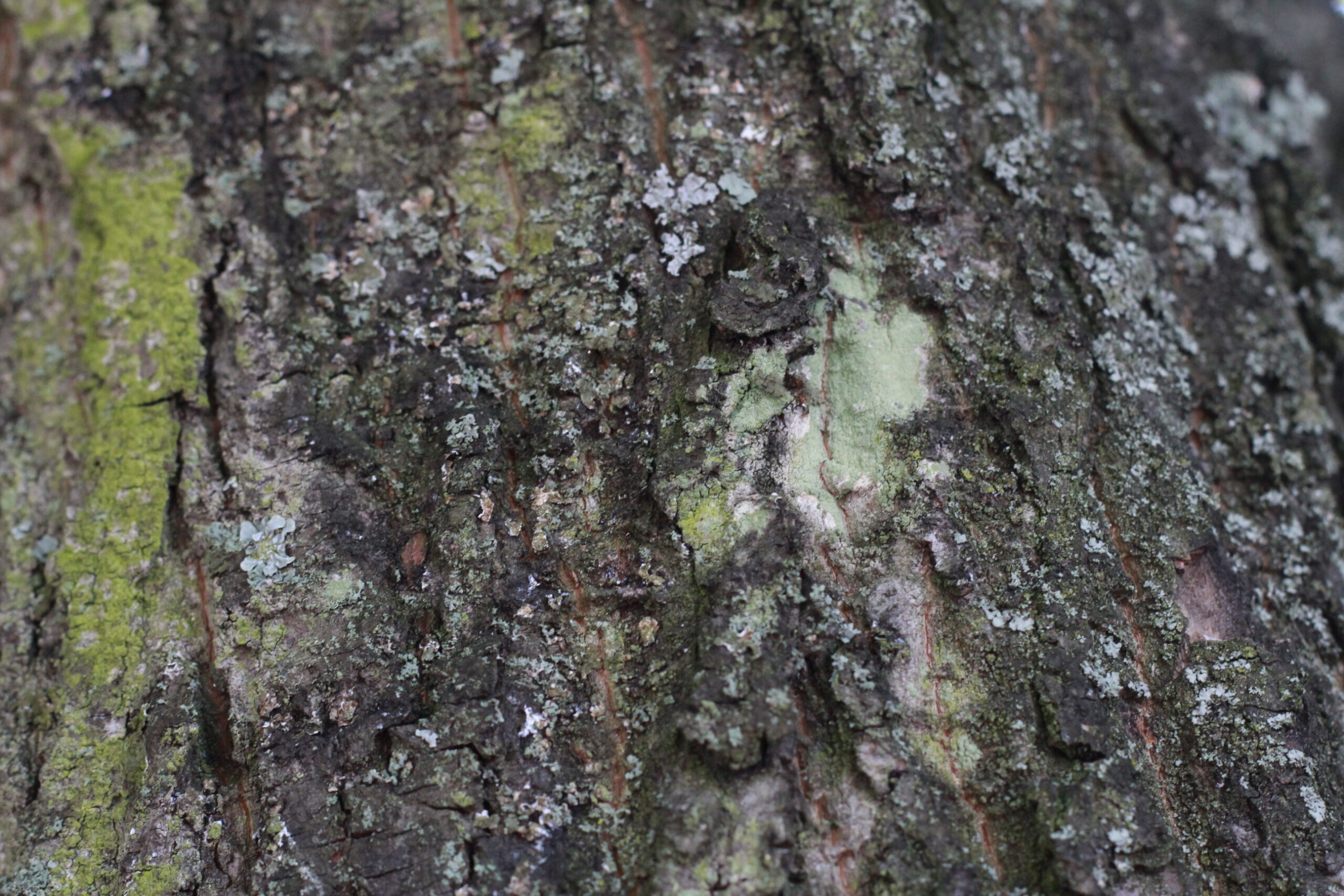
One side is full of alga, showing the difference in habitat.


Credit: Alga, picture taken by the author (2021). CC BY-SA 4.0.
Reference
- Haraway, D. J. (2016). Staying with the trouble: Making kin in the Chthulucene. Duke University Press.
- Griffiths, D. (2015). Queer theory for lichens. UnderCurrents: Journal of Critical Environmental Studies, 19, 36-45.
- Sheldrake, M. (2020). Entangled life: how fungi make our worlds, change our minds & shape our futures. Random House.
- Gilbert, S. F., Sapp, J., & Tauber, A. I. (2012). A symbiotic view of life: we have never been individuals. The Quarterly review of biology, 87(4), 325-341.
For more information on Lynn Margulis (one of the rare women in science in her time), check out this article: Gray, M. W. (2017). Lynn Margulis and the endosymbiont hypothesis: 50 years later. Molecular biology of the cell, 28(10), 1285-1287.
Feedback
If you don’t continue the ride, can you give us feedback on your experience here ? It will help us improve!
Let’s meet a little further on near the canal on Fountainbridge Green, you find the exact location on the map below👇🏾👇🏾


